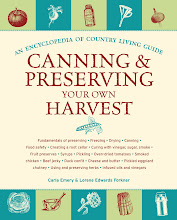These days, washing our clothes is easy. As Carla Emery puts it in The Encyclopedia of Country Living, we "wear a garment part of one day and then put it in the wash." Before technology became a model of convenience instead of necessity, this wasn't an option. Not only weren't clothes washed in an electric machine; they were only washed when they were absolutely filthy.
I will be the first to say I love washing machines. We all deal with enough in our days that we appreciate going home and not having to scrub clothes clean. But in this economy, hand-washing your clothes does not seem like a ridiculous option anymore. The amount of water you save is tremendous, and with your washing machine out of the picture, you will keep a few green papers in your pocket.
There is not just one way to hand-wash your clothes. One way, according to Carla, is to boil your clothes. "In the old days," she wrote, "'Washing' clothes meant boiling them, which is also a natural technique for agitation-and sterilization!-when you think about it." When this water gets dirty, you should throw out the wash water and replace it with rinse water.
Then comes the real labor of hand-washing. Add soap and lots of water, keeping the temperature of the water as hot as your hands can stand. "I push the clothes in and out of the water, counting as I go: maybe 100 squishes of the material for this one, only 25 for something less dirty."
The goal is to release dirt by squishing the water through the surface of the cloth. However, using your hands alone is not the only way to do this. You can also use a washboard or a plunger. "A rubber toilet-type plunger is actually easier on the clothes and still gets them clean. The good thing about a plunger is your hands don't get raw from the detergent."
Carla then says to rinse "at least two waters" to get as much soap out of the cloth as you can. Then, wring out the clothes, and hang up to dry on a clothesline. The easiest weather to hang clothes is on a dry summer day, but if you are facing alternative conditions (windy, not hot enough, indoor drying), use clothespins to prevent doublings. In the winter, dip in salt water first to keep them from freezing, or dry indoors.
If you are looking for other simple ways to wash your clothes, Carla has some innovative tips to keep your fibers fresh!
Non-Electrical Washing Machines.
Washers that don't use electricity are available by mail from Lehman's. There is a James Hand Washer with wringer. You push a rod back and forth to cause the agitation action in the 16-gallon tub and use a hand crank to run the wringer. You can get a washboard, a clothes stomper, or a gas-engine-powered washing machine there also. Another system: If you have a car and a bumpy road, put your laundry into a 5-gallon bucket with a tight lid and then into your car before you go to town. Driving over the rough road agitates and washes your clothes!
The Wonderwash is a plastic container that can hold 4-5 lb. of the dirtiest clothes you have. Add 1 T. biodegradable soap, and water as hot as that fabric can handle. Put the lid on, tighten up, and crank. The hot water turns to steam under pressure in the sealed, sloshing churn. That pressure knocks the dirt out of the clothes. Two minutes of cranking will do it. (This machine will also churn butter.)








1 comment:
I really like your way of explaining. I have enjoyed reading your blog and it is interesting and also informative. I am expecting for the post regarding environment friendly cleanersThanks!
Post a Comment